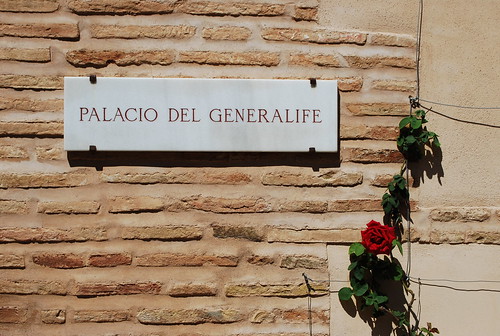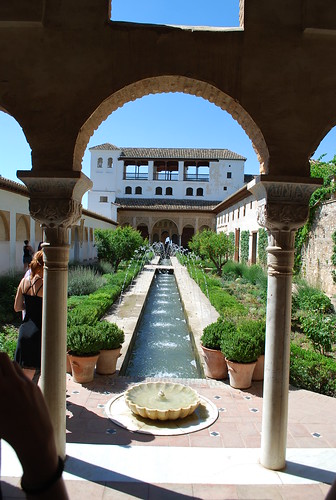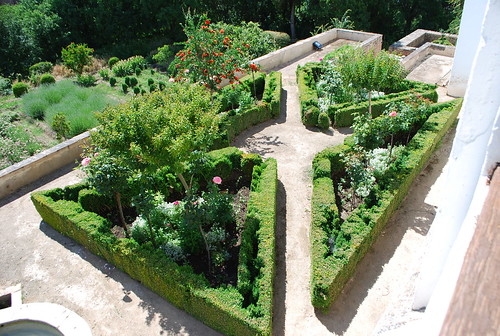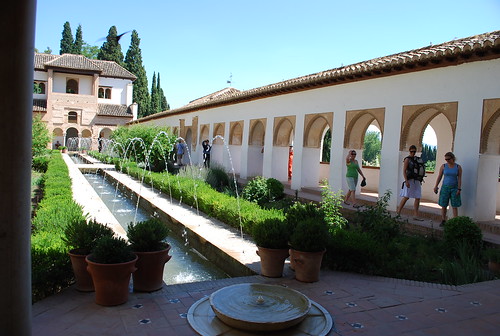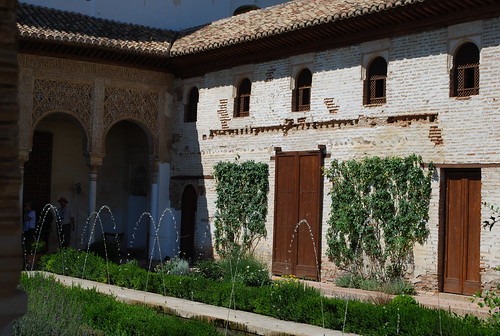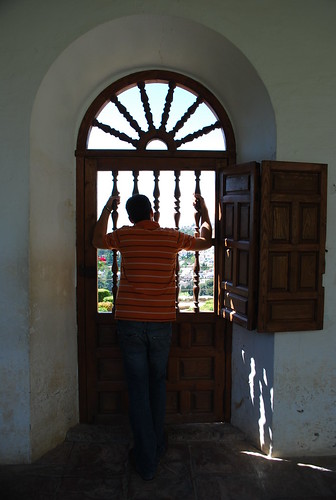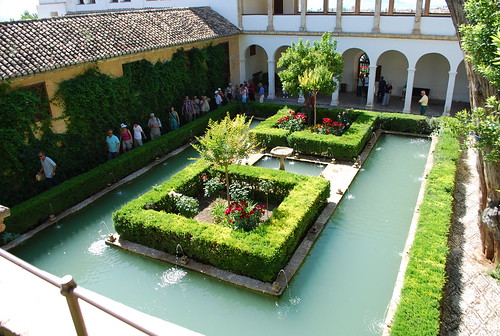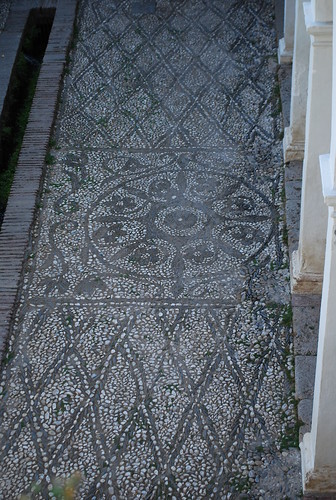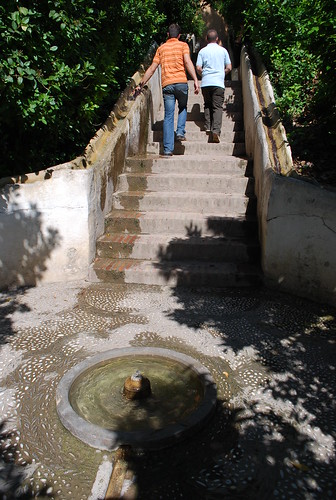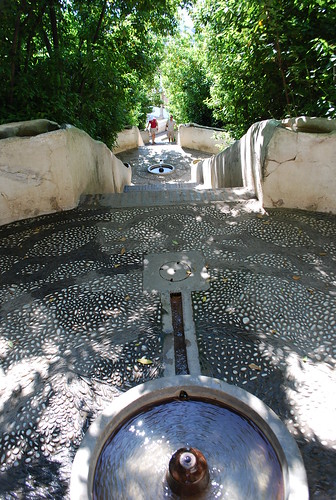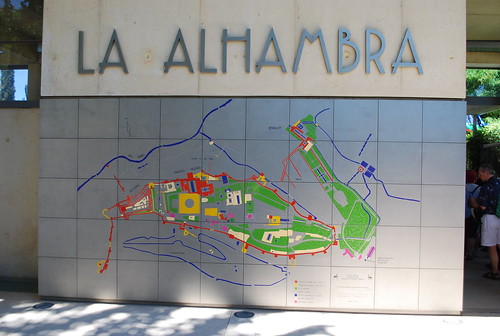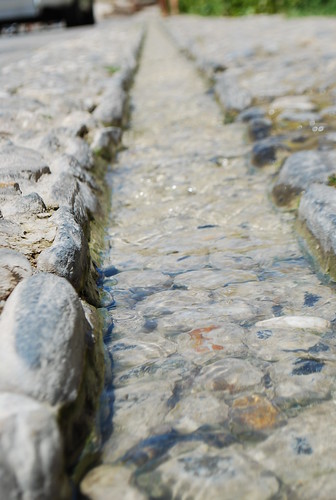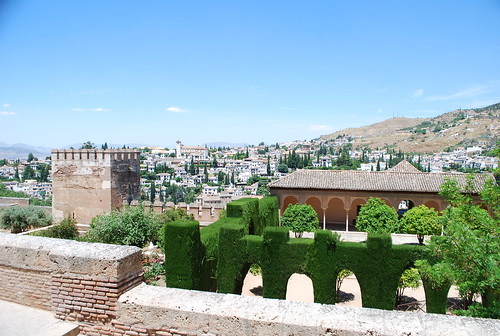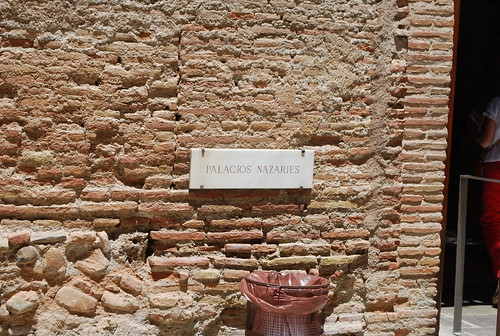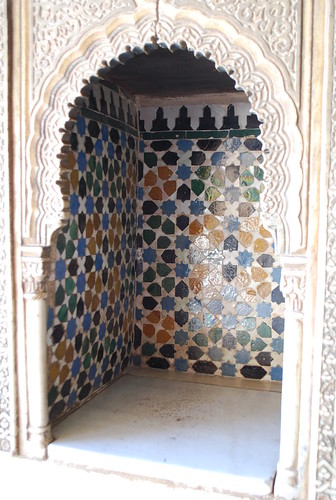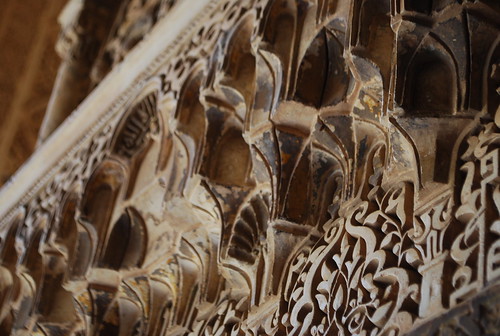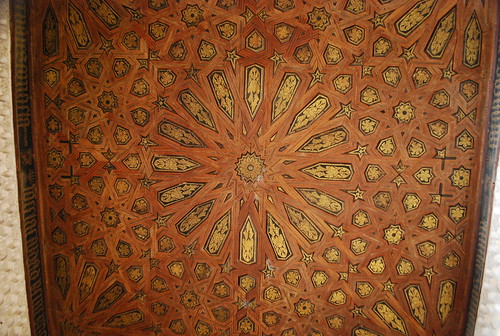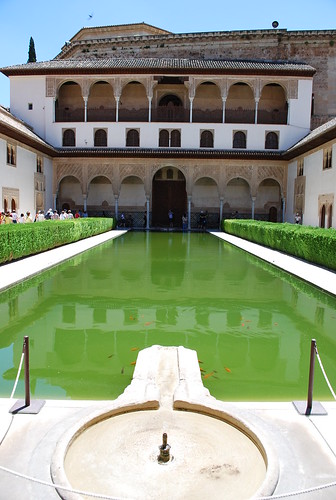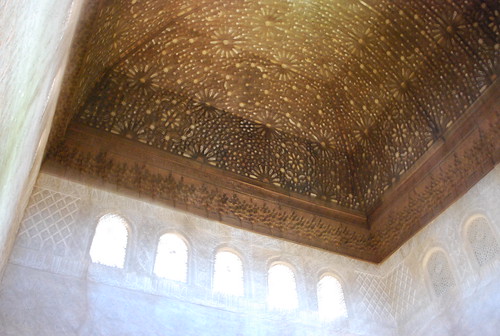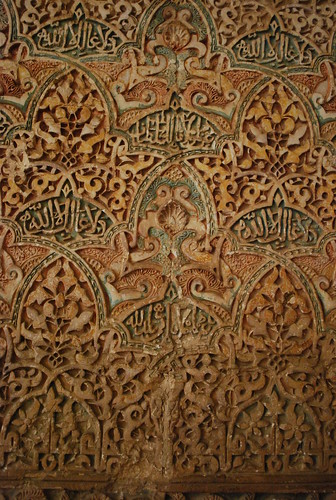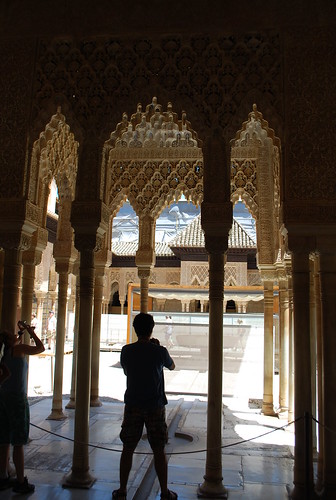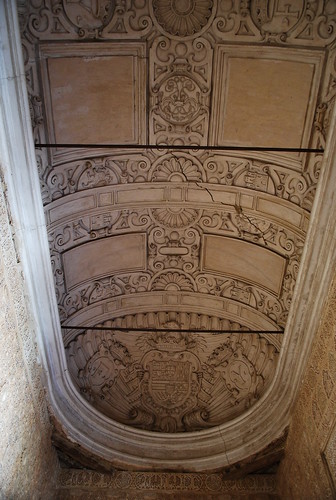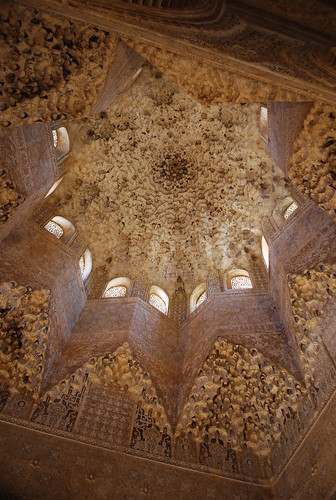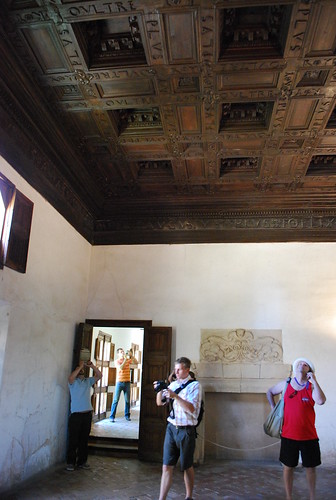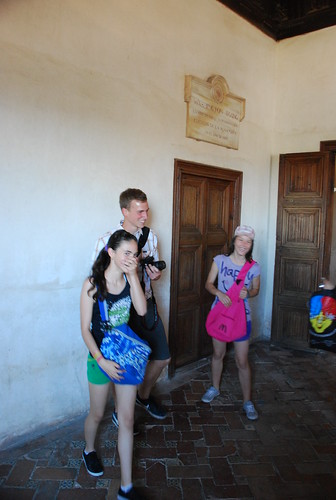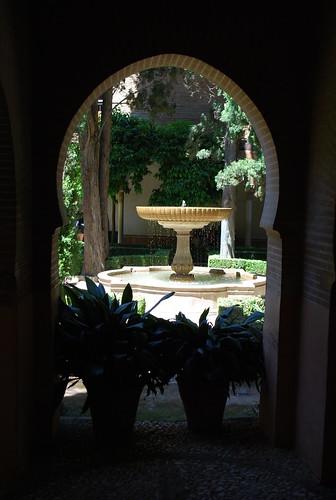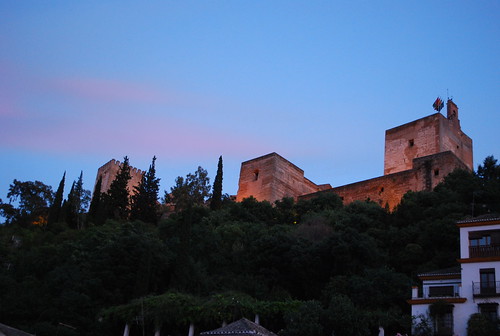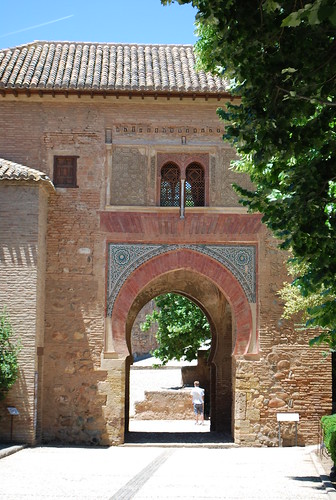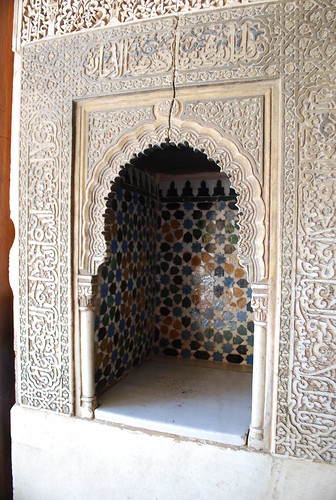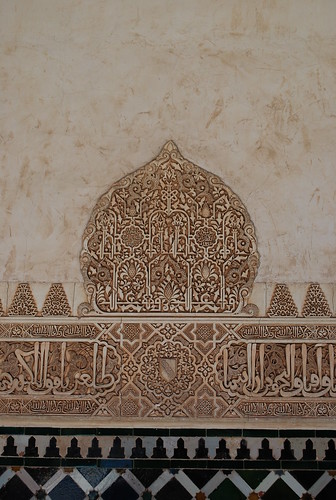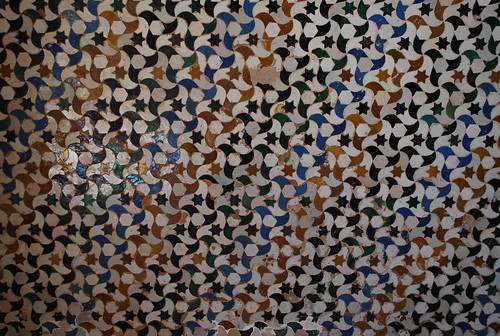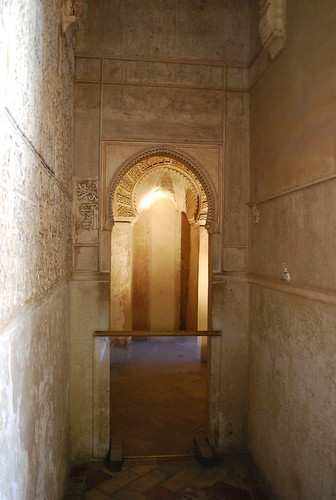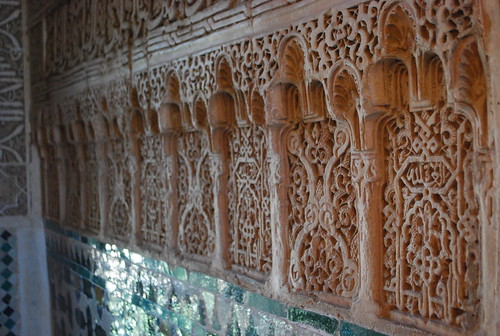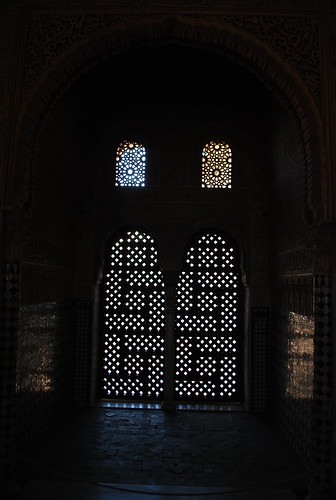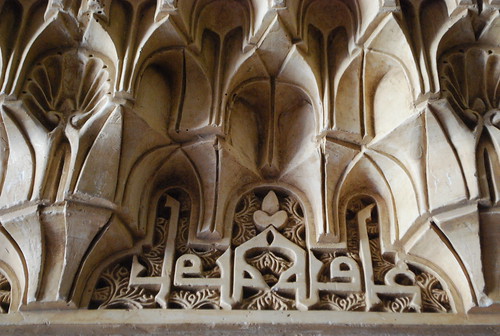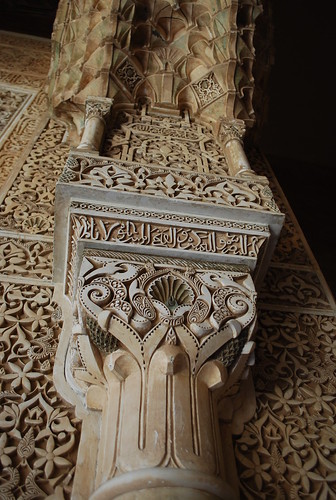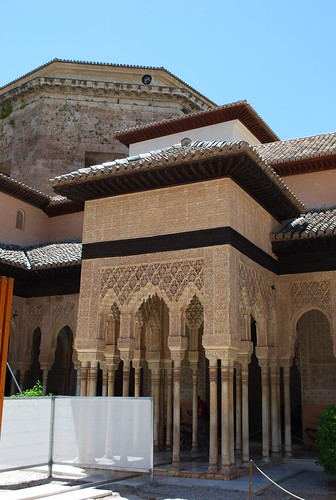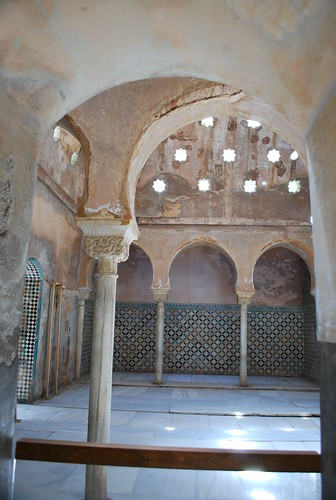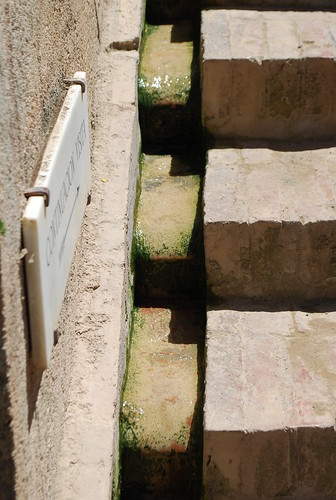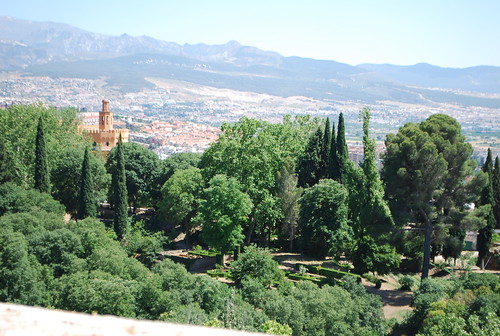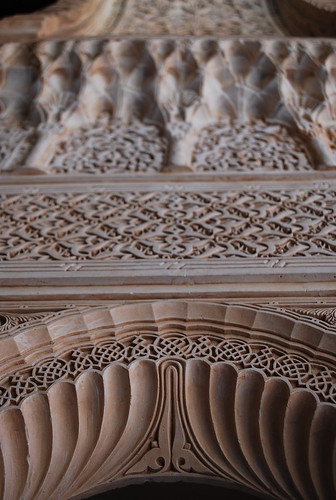According to my new friend Washington Irving, who heard it one night about a hundred years ago at a noble feast in the Nasrid Palace, the palace and gardens of Generalife were built by one of Granada's early kings in order to keep his young son and heir sequestered from the world so that he would remain ignorant about that idle passion called love, and therefore not ruin his life. A good plan, that, until the King hired an all-knowing sage to teach the prince, threatening the sage with his life if he gave his charge even a hint of what love is all about. The wise tutor kept his word, but he made the fatal mistake of teaching the prince the language of the birds. When the prince reached the tender and hormonal age of 20 he was locked in the highest tower (I thought only maidens were locked in towers?) for writing sonnets to the trees (ah, perhaps that explains it), and chanced to meet with a dove who flew in and explained to him about the, er, well, the birds and the bees.
Ahem.
I wouldn't be surprised to learn that Sangria was flowing rather freely at that feast of Irving's. Nevertheless the Generalife (pronounced hen-er-al-LEE-feh), from the Arabic Jannat al-'Arif or Architect's Garden, was built in the early 1300's as a summer palace and retreat from the drama of courtly life at the Alhambra. To reach the gardens, we walked through what was once the orchard and market gardens dating back to the 1200's. Now they contain geometrically clipped cypress and more water channels. Entering an outer courtyard filled with Jasmine instantly gave me a headache. The scent of the bloom was so thick you had to slice your way through it with a scimitar. This would have been where visitors parked their horses and I wondered if the walls had been papered with such a fragrant vine in the days of the Sultans to mask other more equine scents? Up a short flight of stairs is the entrance to the Generalife gardens. Perhaps the most famous view of the palace is this one:
This is the Patio de la Acequia (Court of the Water Channel). The parallel jets down either side are modern, added in the 19th century. Archaeologists doing excavations after a 1958 fire discovered that the pool did have at least 12 jets in its original design, so the addition of the present spouts is in keeping with the historical renovation of the palace. Originally the garden was laid out in a Char-Bagh style with four sunken flower beds bisected by the water channel which draws water from the Alhambra's Royal Canal (Acequia Real), which provided the palace's water supply, and perpendicularly by a stone walkway at the center of the canal that leads through the arcade into a mirador on the hillside overlooking the gardens and orchards below.
The open arcade is new as well. During the Christian era, sometime in the mid 1600's, the solid wall on that side was replaced with the corridor of repeating arches. Before the arches, the mirador would have been the only place where one could look outside. I tried to imagine how this would have changed the feeling of the space, from an almost entirely enclosed intimate courtyard to the semi-open space it is now and wished for a genie to take me back in time to experience it first hand. Like the Alhambra, decoration of the Generalife was elegant and intricate - Moorish carvings, filigreed lattice, opulent apartments, cooling water features outside and in.
At either end of the courtyard are two small pavilions once used as palace apartments. One has a view of the entire city of Granada and the valley of the Darro River, flowing in the distance below the palace. Throughout its history, many a forlorn prince and princess have sat imprisoned in the Generalife's lofty towers and gazed longingly at the world beyond. This one was no exception...
Through what was once one of the royal bedchambers is another arcade dating back to the 1500's which looks out to the Courtyard of the Cypress or Sultan's Court. This area used to be the palace bath and was converted to a garden during another royal remodel. The water in this garden comes from the Royal Water Channel where it continues through the middle of the Patio de la Acequia on the other side of the wall. From there the water flows out into the market gardens and orchards below where it joins a third water channel called The Third Water Channel (catchy, huh!).
Another legend has it that a Sultana was engaged in an assignation with a knight from the rival Abencerrajes clan under a large cypress tree, kept from falling down now by a large metal brace, when her husband the Sultan came on the scene. The Sultan was so incensed that he massacred all 37 male members of the rival family in a hall of the Alhambra that is now known as the Hall of the Abencerrajes. Reputedly the stains in the fountain basin there are all that remain of that bloody day.
In contrast, the floor of the Sultan's Courtyard is paved in a beautiful pebble mosaic with white pebbles taken from the river Darro and black ones from the river Genil, the only stains here being the ones left by decades of tourists' feet.
On a terrace above the courtyard is a water staircase leading up to yet another small palace, converted to a chapel. The banisters themselves are carved rills which the water runs down and there are basins in the circular landings with water bubbling from the center. Visitors can't resist trailing their hands in the cold water as they ascend the stairs. Some sources say this ingenious water feature is not common to Moorish gardens but was invented by the Egyptians and have been found in Romanized gardens, which is where the Moors probably got the idea. This is the entry point of the water diverted from the river Darro that feeds both the Generalife and Alhambra complexes. Throughout both sites water is celebrated with ornate yet practically functional channels and rills, fountains and basins, all once fed by gravity.
Reaching the top of the water stair, you almost immediately start down again via another stairwell covered in Wisteria. Here terraced gardens filled with clipped hedges, roses, fruit trees, and - yes - more water, step their way down the hillside. At the bottom you enter a corridor covered by Oleander trained to arch over the walkway, providing a shady walk back to the main entrance of the palace grounds. Through the leafy canopy you can catch glimpses of the gardens and fortress of the Alhambra beyond.
